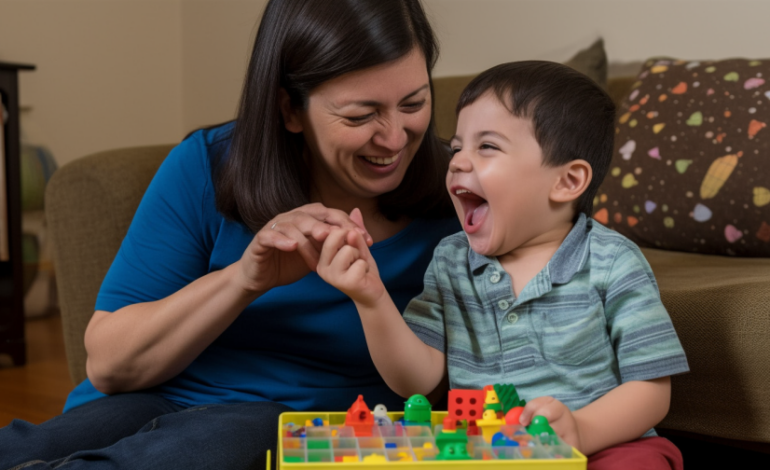
Effective Strategies for Enhancing Communication Skills in Special Needs Children
Having a child with special needs can be challenging, especially when it comes to communication. As a parent or caregiver, you want to ensure that your child is able to express their thoughts and feelings effectively. However, this can be difficult when your child has trouble communicating due to their special needs. Fortunately, there are many strategies that you can use to enhance communication skills in special needs children.
Understanding the Challenges of Communication for Special Needs Children
Before we dive into the strategies for enhancing communication skills in special needs children, it’s important to understand the challenges these children face. Communication difficulties can arise from a variety of conditions such as autism spectrum disorder, cerebral palsy, Down Syndrome, and hearing impairment.
Children with special needs may have difficulty with verbal communication, making it hard for them to express themselves using words. They may also struggle with non-verbal communication such as facial expressions and body language. Additionally, some children may have sensory processing issues that make it difficult for them to process sounds or touch. These challenges can affect their ability to communicate effectively.
Effective Strategies for Enhancing Communication Skills in Special Needs Children
The following strategies have been proven effective in enhancing communication skills in special needs children:
1. Assistive Technology
Assistive technology refers to devices and tools that help individuals with disabilities perform tasks they would otherwise have difficulty completing on their own. In terms of communication, assistive technology includes devices like speech-generating devices (SGDs), which allow non-verbal individuals to communicate using pre-programmed messages or by typing out words on a screen.
There are also apps available that offer similar functionality on tablets and smartphones. These apps allow children with special needs to communicate using pictures or symbols instead of words.
2. Speech Therapy
Speech therapy is a type of therapy that helps individuals with speech and language disorders improve their communication skills. In speech therapy, a trained therapist works with the child to identify areas of difficulty and develop strategies to overcome them.
Speech therapy can help children with special needs improve their pronunciation, vocabulary, and sentence structure. It can also help them learn how to use non-verbal communication effectively.
3. Social Stories
Social stories are short stories that are designed to teach children social skills and appropriate behavior. They are often used with children who have autism spectrum disorder, but can be helpful for any child who struggles with social interactions.
Social stories can be used to teach children how to communicate effectively in different situations. For example, a social story might explain how to ask for help when they don’t understand something or how to initiate a conversation with a peer.
4. Picture Exchange Communication System (PECS)
The Picture Exchange Communication System (PECS) is a communication system that uses pictures instead of words. Children using PECS exchange pictures with their communication partner to express their wants and needs.
PECS can be helpful for non-verbal children or those who have difficulty using words to communicate. It allows them to communicate effectively without relying on spoken language.
5. Augmentative and Alternative Communication (AAC)
Augmentative and Alternative Communication (AAC) refers to any method of communication that supplements or replaces spoken language. This includes devices like SGDs as well as sign language and gestures.
AAC can be helpful for children who have difficulty speaking or understanding spoken language. It provides an alternative means of communication that can help them express themselves effectively.
6. Sign Language
Sign language is a visual language that uses hand gestures and facial expressions to communicate. It can be helpful for children who have difficulty with spoken language or who are deaf or hard of hearing.
Learning sign language can help children communicate more effectively with others who also know sign language. It can also be a helpful tool for parents and caregivers who want to communicate with their child.
7. Visual Supports
Visual supports are aids that help individuals understand and learn information using visual cues. They can be helpful for children with special needs who have difficulty processing spoken language.
Visual supports can include things like picture schedules, visual timers, and social stories. They provide a way for children to understand information visually, which can help them communicate more effectively.
8. Sensory Integration Therapy
Sensory integration therapy is a type of therapy that helps individuals with sensory processing issues learn how to process sensory information more effectively.
This type of therapy can be helpful for children with special needs who have difficulty processing sounds or touch. By learning how to process sensory information more effectively, they may be better able to communicate with others.
Conclusion
Enhancing communication skills in special needs children requires patience, understanding, and the right strategies. By using assistive technology, speech therapy, social stories, PECS, AAC, sign language, visual supports, and sensory integration therapy, parents and caregivers can help their child communicate more effectively.
It’s important to remember that every child is unique and may respond differently to different strategies. It’s important to work closely with your child’s healthcare providers and therapists to determine the best approach for your child.
With the right support and strategies in place, children with special needs can learn to communicate effectively and thrive in the world around them.






